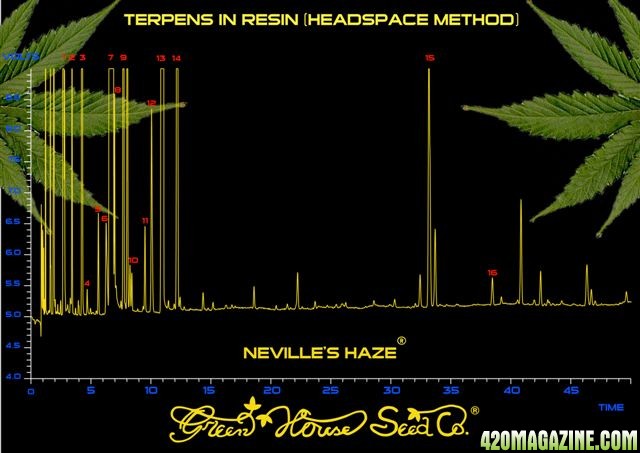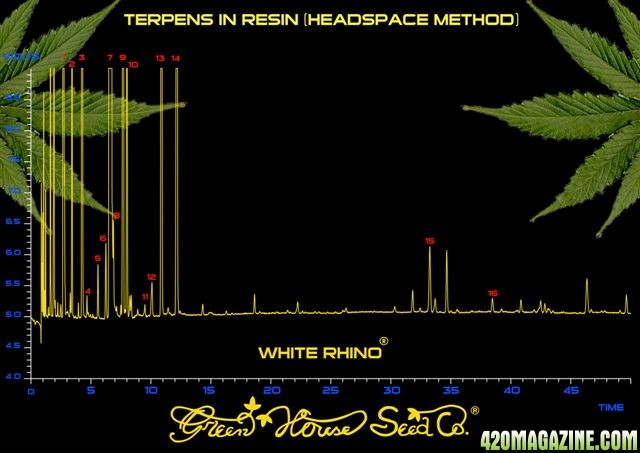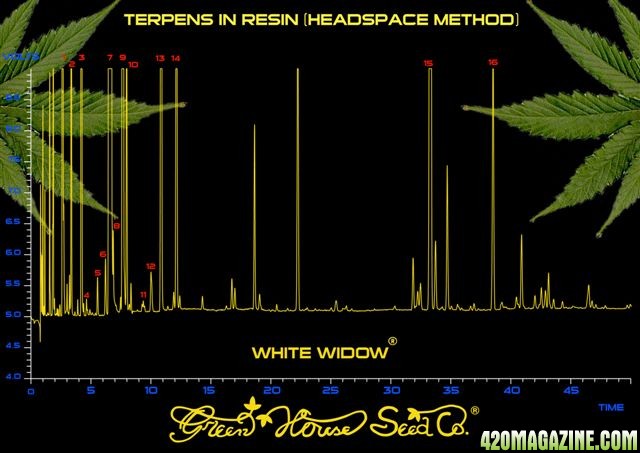Smokin Moose
Fallen Cannabis Warrior & Ex Moderator
Greenhouse Seed Company has just released Terpene Profiles for all their strains. These terpene profiles are obtained using the Head Space Method of Liquid Gas Chromatography, and are accurate in indicating terpenoid profiles of strains to help growers with breeding, and also application in medicinal use. I hope you find these useful. You may want to pay close attention to the levels of Myrcene in each of the strains.
For those of you who do not know what Terpenes are, they are basically the aromas of the strains, and come from chemical compounds in the resins. They play a very important part in the high from Cannabis, and are essential in medicinal applications.












For those of you who do not know what Terpenes are, they are basically the aromas of the strains, and come from chemical compounds in the resins. They play a very important part in the high from Cannabis, and are essential in medicinal applications.















 I'm wrong more than I'm right - always question anything coming from this guy
I'm wrong more than I'm right - always question anything coming from this guy